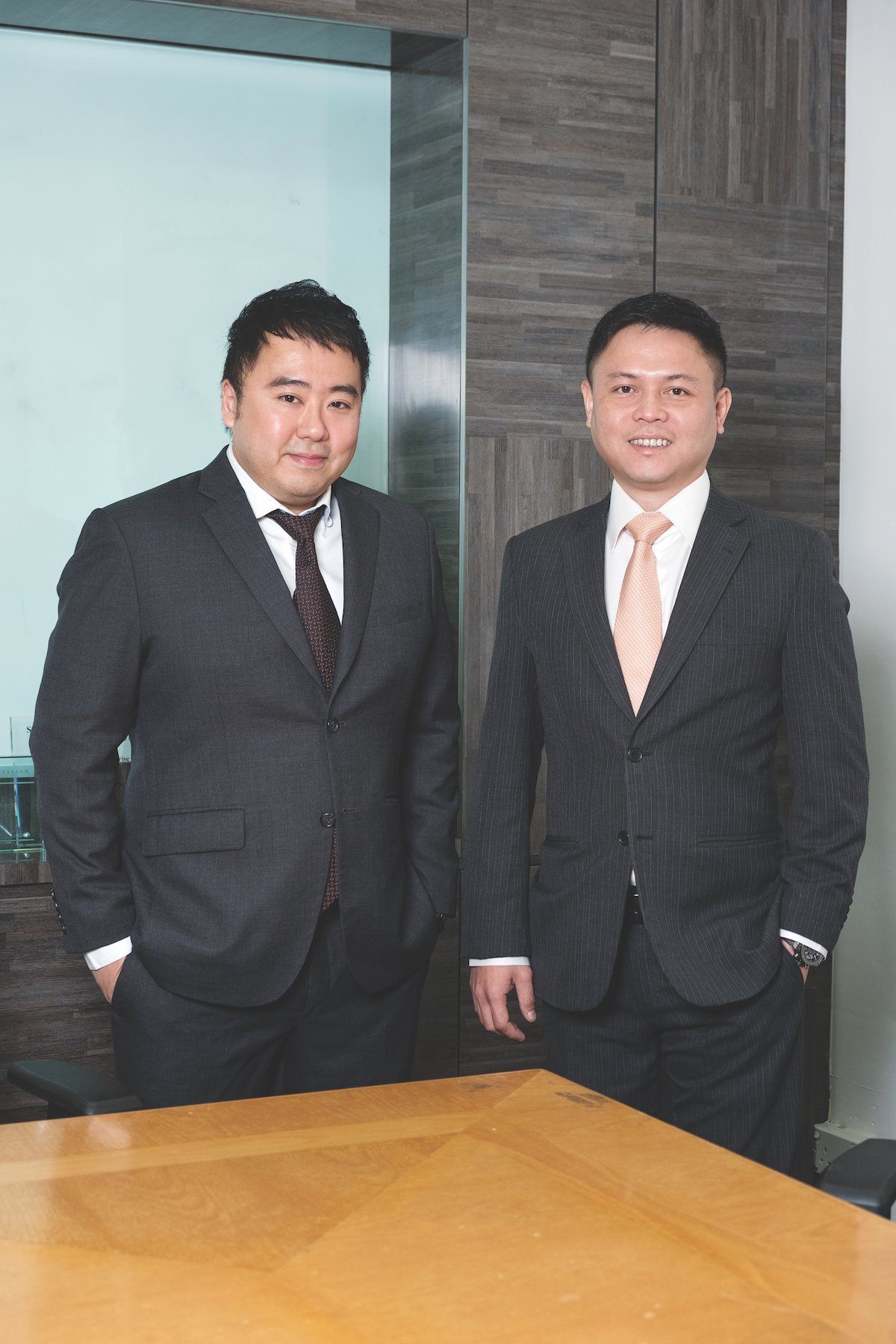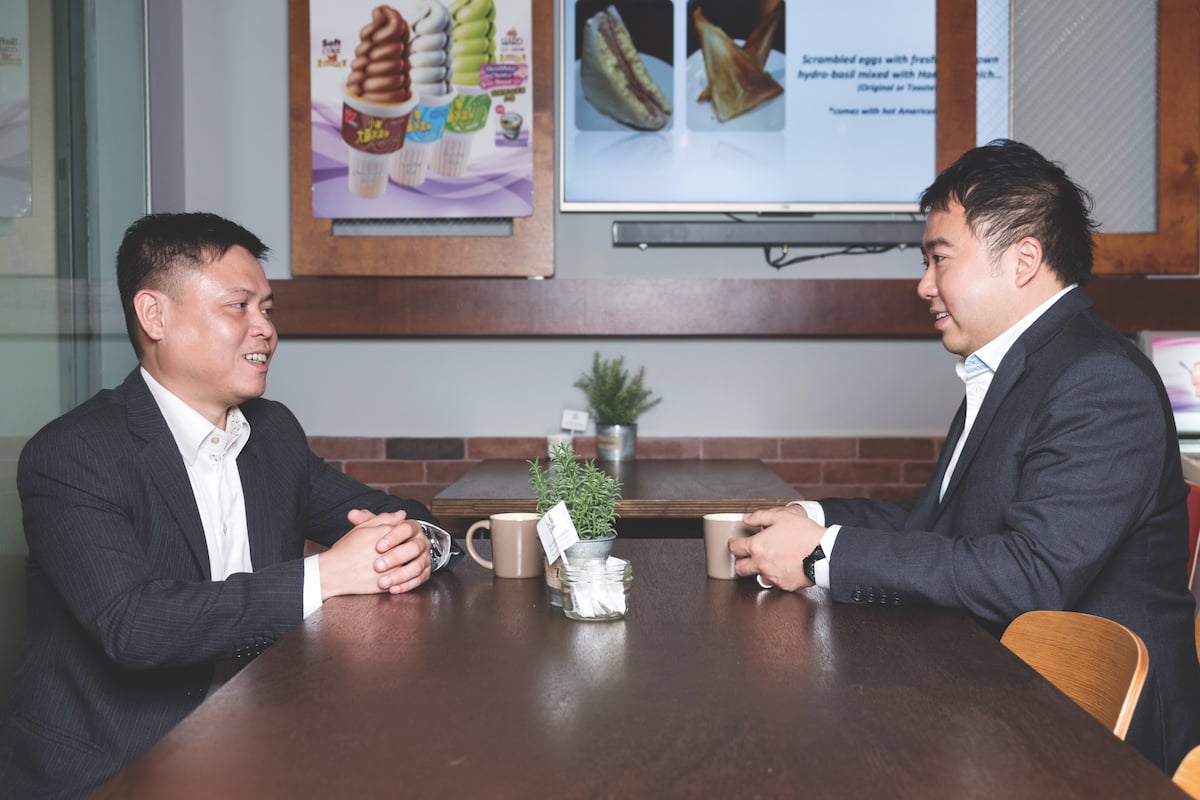Frank Phuan Ling Fong’s background in solar energy and Lawrence Wu’s in finance have put 2 friends who met during their university days in the ideal position to make a big impact on Singapore’s renewable energy market.
Spying an opportunity to deliver an integrated solar service, their company rolled out Singapore’s first solar Power Purchase Agreement (PPA) project in 2010. 6 years on, it has captured 90% of Singapore’s market, and now has contracts throughout the Asia region from Cambodia to Thailand. Naturally, they’ve faced their fair share of challenges along the way, but solid relationships with technology and finance partners are helping them realise their vision for offering a one-stop solar energy solution to companies throughout the region. Next on their horizon: helping governments achieve the goal of complete electrification in countries where power is still considered a luxury.
The CEO Magazine: What puts Sunseap at the forefront of the renewable energies industry?
Frank: I would say our background working on solar, and the legacy that my late father left helped place us in this position. My father started the solar business in 1979, and at that point it was one of the first solar companies in Singapore. I grew up helping him in the business, working on manufacturing and other areas such as marketing, where I created materials for our products. It is during these years, where I learned about solar and its functionalities.

Other factors that have contributed to this progress include the foresight and decision of the Singapore government to not follow the approaches taken by neighbouring governments. The majority of the neighbouring countries that have embraced renewables introduced some form of premium or incentive to motivate adoption. This includes the concept of feed-in tariff.
The Singapore government did not choose to introduce the same concept because it believes in the benefits of setting a market price. Their take on this is that, regardless of whether you’re generating power from oil and gas, diesel, or nuclear energy, you have to be market competitive. However, this also makes Singapore one of the toughest places to generate solar energy because there are no monetary incentives.
Another challenge is the lack of space in Singapore. The only place you can install solar systems is on rooftops. This makes it impossible to spread your 1 megawatt-peak (MWp) systems across large areas of land, and instead they have to be divided into 20 smaller rooftop systems to achieve the same capacity. As a result, these individual systems at approximately 50 kilowatt-peak (kWp) have to be installed on high-rise buildings that are at times 20 to 25 storeys high. The height and tight working space makes solar installation one of the toughest jobs in Singapore. With that said, Sunseap is familiar in this area, and with our technical know-how, we are able to deploy large-scale installations on bigger plots of land overseas. Compared to local installations on high-rise buildings, these large-scale installations can be considered a ‘walk in the park’.
Lawrence: Research and development is a big part of what we do at Sunseap. Our special-projects team takes on innovative projects such as floating solar systems, mobile solar farms, and energy storage solutions. Our close network of industry partners also helps keep us moving in the right direction.

“We do not charge any upfront costs. Once our clients sign up and have the solar systems installed, they will be able to achieve savings from day one.”
– Frank Phuan Ling Fong
What do you consider your highlights or significant milestones?
Frank: The first roll-out of a solar PPA project, which was a 2-MWp project, in 2010. We completed Singapore’s first solar installation in 2006. At that time, there were no on-grid systems in Singapore. Our first project was meant to be a demonstration project back in 2006 at the German European school. From 2006 to 2010, the total installed solar capacity in Singapore was only about 2 MWp. When we won the tender and completed the solar PPA project, we doubled the country’s capacity. That was very significant, not just for Sunseap but in a bigger picture for Singapore as well. Today, we have a contracted capacity of about 180 MWp. We have almost 90% market share just for Singapore.
We are now trying to replicate that message and service in other parts of the region as well. Most recently, we’ve signed contracts in Cambodia, Thailand, the Philippines, as well as in India.
What benefits do clients gain from your integrated service approach?
Lawrence: Our integrated service simplifies the process of procuring renewable energy for our clients by eliminating upfront capital costs, and taking care of all cost and processes from installation to maintenance. The technology risks, as well as the power production risks, now reside with us, allowing the client to focus on their business.
Frank: In Singapore, it is a requirement to possess a licence if you have a sizeable generation asset. The Singapore government treats solar systems like power-generation stations, with the solar systems receiving energy readings on a continuous basis. I think it is a hassle for most clients to look to multiple partners and providers for different solutions; that is a very difficult task to take on for work that is not related to their core business.
In our experience, when our clients sign up with us, they want a complete solution. A one-stop solution addresses these painstaking issues that they will otherwise be facing. Also, we do not charge any upfront costs. Once our clients sign up and have the solar systems installed, they will be able to achieve savings from day one.

“We’d love the opportunity to help governments achieve their goal of complete electrification of their countries.” – Frank Phuan Ling Fong
How important to your success are your key supplier relationships, and how do you develop and maintain these relationships?
Lawrence: Our relationships with our key suppliers are of absolute importance. We practise open communication and rely heavily on them for short-term working capital credit. We also constantly engage our suppliers in conversations to find out how we can improve our processes where they are involved.
Frank: Our technology and financing partners are most important. We would not be where we are without them. Only with good technology and good reliability of that technology can we operate our plants for the next 20 to 25 years. Having a long-term relationship with our suppliers is crucial. Once we identify our partners, we try to maintain a close relationship with them, getting monthly updates on technology developments and how we can integrate them into our systems.
Sometimes these technologies can come at a higher cost; however, as long as it allows us to have a low maintenance and operating cost over the long run, we will be inclined
to look at it. In terms of financing partners, our business requires a very high capital cost. Since the customer pays nothing up front, we will have to be the ones investing 100 per cent of the system costs. We have to work closely with our financing partners, and having a long-term relationship is very important.
What do you love most about your job?
Lawrence: The most interesting part of building a company is that each day is different. It is truly rewarding to see how far we’ve come since the company’s incorporation in 2011. Before then, the total capacity of installed solar systems in Singapore was only 5.9 MWp and our headcount was just Frank and myself. Sunseap now has a total signed contract capacity of more than 180 MWp in Singapore, as well as regional offices in Thailand, the Philippines, Australia, Malaysia, Cambodia and India, and a total direct headcount of 80.
Frank: I think growing up in this environment and now executing it throughout South East Asia has brought me a lot of joy and satisfaction. Of course, the job itself — producing renewable energy, which is green and clean — morally, that gives me a lot of satisfaction. Importantly, in the future I look forward to rolling our solar PPA model into other parts of Asia. I was just in Laos. You see a lot of poverty there and a lot of people without electrical power.
In Cambodia, about 30 to 35 per cent of the population doesn’t have electricity. We want to be there, as a company, to deliver solar to the people who basically look at electricity as a luxury. We’d love the opportunity to help governments achieve their goal of complete electrification of their countries.




Great feature about a pair of really inspiring guys – I hope they succeed in their quest to bring renewable energy across the APAC-SEA verticals.